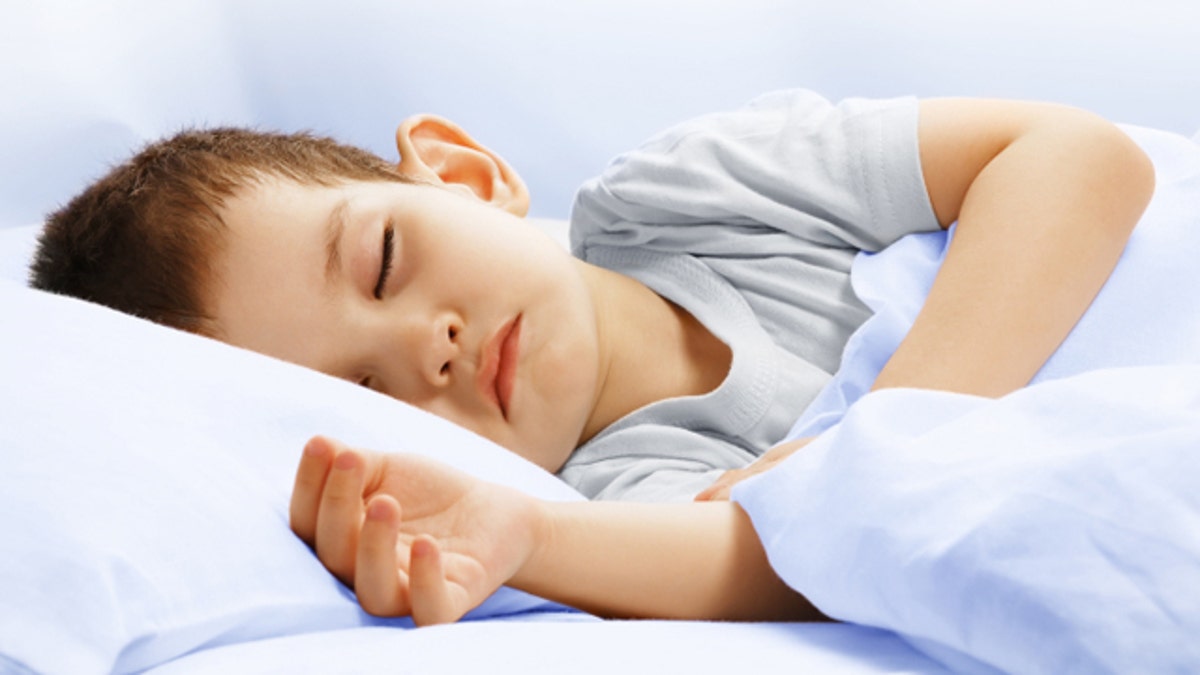
(iStock)
For parents of young children, nap time can be the best time of the day: The house is quiet, the kids are sleeping and there's finally an hour or two of personal time.
But those daytime naps could make young children less likely to sleep as well at night, at least if a new review from researchers in Australia is to be believed. The team found that among children ages 2 and up, those who napped were more likely to have trouble falling asleep at night, and to have more fitful sleep.
However, the effect was rather small, and outside experts aren't convinced. The study looked at children from a wide range of ages, making it difficult to interpret the results.
And even if taking daytime naps means young children get less sleep at night, that doesn't mean that parents should ditch their preschooler's afternoon nap, said Dr. Richard Ferber, the director of the Center for Pediatric Sleep Disorders at Boston Children's Hospital, and the author of "Solve Your Child's Sleep Problems" (Touchstone, 2006).
"Young children need to nap for optimal performance," Ferber told Live Science. "You don't want to sleep deprive them to see if they can sleep deeper at night, you want them to sleep the best way." [How Much Sleep Do You Really Need? Infographic]
Sleep guidelines
On average, children ages 3 to 5 should sleep between 11 and 13 hours a day, and most typically give up their nap by age 5, according to the National Sleep Foundation. However, how kids get their Zzzs varies: Some preschoolers may get all of that sleep at night, while others may take a long afternoon nap.
In the new review, researchers led by Karen Thorpe, of the Queensland University of Technology, looked at 26 studies that assessed sleep in children from birth to age 5. The studies looked at how sleep correlated with a host of health issues, such as obesity and behavior.
In general, sleepiness is orchestrated by what researchers call the homeostatic drive, which means that a kind of pressure to sleep builds up the longer a person is awake. Little ones (and adults) who nap during the day are releasing some of that sleep pressure, meaning it's not that surprising that they might have less of an urge to go to sleep at night, Ferber said.
But that doesn't mean parents should do away with naps, and even in the new review, many of the studies that the researchers looked at showed that naps provide cognitive and physical benefits for young children, he said.
Study problems
In addition, the study had a number of limitations. For one, the researchers analyzed studies of children with very different age ranges, who tend to have very different sleep needs, Ferber said. The studies also required parents to recall how their children napped, which can be very prone to error, he added.
In addition, other studies have found no correlation between nighttime and daytime sleep duration, said Dr. Marc Weissbluth, a pediatrician and emeritus professor at Northwestern University in Evanston, Illinois, and the author of "Healthy Sleep Habits, Happy Child," (Ballantine Books, 2003).
In addition, all of this sleep research has a fundamental "chicken and egg" problem, Weissbluth said.
It may be that children who nap longer during the day are actually catching up because they are chronically sleep-deprived, Weissbluth said.
In his experience, "naps that are too long are a reflection of a bedtime that's too late or fragmented night sleep," Weissbluth told Live Science. (In an email comment, Thorpe said that some of the studies included in her research suggested that the long napping preceded the nighttime sleep problems.)
For children who are not sleeping well at night, Weissbluth recommends an earlier bedtime to help them catch up on sleep, while Ferber recommended the opposite — a later bedtime, so that kids might fall asleep more easily.
As for the daytime naps, both are in agreement.
"Napping past age 2 is very common," Weissbluth said. "There are plenty of 3-year-olds that nap and have no problems at all with night sleep."
The study was published today (Feb. 17) in the Archives of Childhood Disease.
Copyright 2015 LiveScience, a Purch company. All rights reserved. This material may not be published, broadcast, rewritten or redistributed.




















